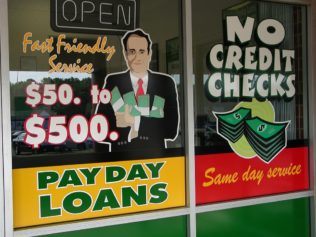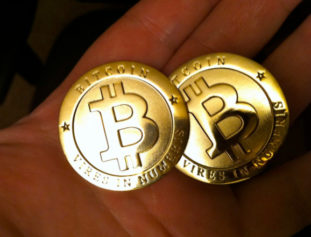Long before he became a prominent national figure, decades before he rose to his current position as director of the NAACP’s Washington bureau and senior vice president for advocacy and policy, Hilary Shelton spent a portion of the 1980s as a young college graduate struggling to pay off student loans and make ends meet. Consumed by mounting debt, the Howard University alum was further challenged by the relentless fees his banks charged him for inadvertently exceeding his checking account balance.
“Everything was a lot tighter,” recalls Shelton, noting he wasn’t making much money at the time and was on a tight budget. “One little mistake can have a domino effect that ends up costing you more and more money.” Shelton remembers how a check he wrote was presented at a significantly later date, and the timing of the transaction caused overdraft fees to begin kicking in. “The overdraft fees ended up being larger than the amount of money I was trying to pay the person in the check.”
Although those challenging years are well behind him, Shelton is still concerned for those individuals currently wrestling with such fees as they try to achieve a semblance of the stability he now enjoys. A new report from the Consumer Financial Protection Bureau shows his concern is well justified. Among its troubling findings, the study reveals an average overdraft fee of $35 per transaction collectively accounts for almost $14 billion annually in additional charges for American consumers. The consumers hit hardest and most commonly affected, the report finds, are those who can least afford such fees. At the banks surveyed, frequent overdrafters accounted for a mere nine percent of all accounts yet shelled out 79 percent of all overdraft and insufficient fund fees.
“African-Americans are more likely not to be banked and to be underbanked,” says Shelton, referencing how “overdraft fees have actually driven people out of banking altogether” and how Black consumers near the poverty line can seldom benefit from the full menu of services banks can provide. A 2016 Pew Charitable Trusts survey revealed that African-Americans, while reportedly making up 12 percent of the US population, accounted for 19 percent of the “heavy overdrafters” that year.
“People who are basically the working poor, who live paycheck to paycheck and have little to no cushion in their bank accounts are the key overdraft targets,” acknowledges Charlene Crowell, communications deputy director for the Center for Responsible Lending (CRL). Crowell explains these are people “who don’t have a lot of cash to fall back on, and if someone is going to their ATM to use their debit card and they are not keeping track of their receipts, it is very easy to find out once they get their bank statement just how many overdraft fees have been assessed.”
Here’s what commonly happens. You’re struggling to cover your monthly bills, and you make a debit card transaction, unaware your account lacks sufficient funds. However, rather than simply declining the charge, your bank chooses to cover the transaction and, as a result, applies an overdraft fee of $35 per transaction to your account, an amount significantly higher than that by which you exceeded your balance. A significant period goes by before you are even aware of the slight transgression and the associated fees, and now your account has incurred additional bank charges or “sustained” overdraft fees. Given you are on a fixed and limited income, by the time you make your next deposit, these fees have made a significant dent in your account. Consequently, you are caught in a vicious cycle where you consistently incur more of these charges while attempting to cover your basic necessities. At a certain point, when you are no longer willing or able to cover the negative balances and mounting fees in your account, you end up leaving the banking system altogether and begin relying upon predatory or high-interest lenders and check-cashing services for your dire financial needs.
After presenting how these practices can “become another debt trap very similar to, say, a payday or car title loan,” Crowell notes that “the revenue derived from overdraft fees is an important stream of cash for the banks and credit unions that use them.” The financial institutions themselves can determine whether to apply such fees depending on the type of transaction — debit card, ATM purchase, electronic bill payment, paper check — the institutional policy, and the scope of federal regulations. Many choose to do so. In 2015, Bloomberg Intelligence estimated that overdraft fees made up 8 percent of banks’ net income, or $11.2 billion.
It wasn’t always this way. “At one point, 20 or 25 years ago, overdraft fees were a convenience banks provided to their customers,” says Peter Smith, a senior researcher at CRL with a focus on overdraft practices. “If there was an accidental overage in an account, they could contact their members who would then put money back into their accounts as quickly as possible. This was sort of an informal relationship that rested upon the banks knowing their customers.” About the same time, says Smith, “things started to change a bit as banks realized they could allow these transactions and charge a fee.”
Just after the turn of the 21st century, banks began applying overdraft fees to debit card transactions without any real justification. Unlike paper checks, debit card transactions could be declined at the point of sale with no cost to the financial institution if a customer’s account lacked sufficient funds. Nonetheless, this trend would gather steam and, over time, these fees increased in both number and amount. “What we’ve seen, especially as people’s debit card usage has increased,” reports Smith, “so has the volume of overdraft fees and, increasingly, it seems banks are using overdraft fees as a revenue mechanism. So, it seems less like a service they provide their customers and more of a service the banks provides themselves.”
In 2009, the Federal Reserve began requiring financial institutions to first secure a customer’s consent or “opt-in” before applying overdraft fees on future debit card point of sale or ATM purchases. While the regulatory measure helped some consumers avoid these fees, it did little more given the opt-in option was commonly presented to unwitting consumers as a protective benefit for inadvertently exceeding their limit. Consistently, this tepid measure did not impact the number or size of the fees banks could charge.
In 2012, the Consumer Financial Protection Bureau — the agency introduced during the Obama administration in response to the financial crisis of 2007–08 and the subsequent recession — took a closer look at the way financial institutions were manipulating the order of daily transactions by consumers to increase the applicability of overdraft fees. Despite the order they occur, numerous banks lump together a consumer’s debit card transactions, bill payments, checks and ATM withdrawals each day before processing the largest transactions first, a step that maximizes the chances for the assessment of multiple fees.
In May 2016, as a result of these inequitable practices, CRL released an independently-researched report entitled, Broken Banking: How Overdraft Fees Harm Consumers and Discourage Responsible Bank Products, to draw attention to the issue and raise awareness among those consumers saddled by excessive fees. Among its recommendations, it urged the Consumer Financial Protection Bureau to “require that overdrafts fees be reasonable and proportional to the cost to the institution of covering the shortfall; to limit overdraft fees to one per month and six per year; and to subject overdraft programs to credit protections, including permitting repayment in affordable installments.”
The recent release of the bureau’s report has further galvanized numerous groups advocating for the working poor, African-Americans and Latinos. CRL is currently working with the NAACP — which already offers resources and programs on financial planning aimed at the Black community — the Leadership Conference on Civil and Human Rights, and UnidosUS to promote regulations that provide consumer protections from overdraft abuse.
For Shelton, such excessive fees serve as both an ongoing injustice for African-Americans and a constant reminder of his time as a young man struggling to keep the lights on decades ago. “I think we have to be very strict about overdraft rules to make sure the financial services institutions aren’t exploiting this opportunity,” he said. Once a transaction exceeds a consumer’s account limit, says the NAACP leader, there should be a “fair and standardized process by which the person who is banked can be notified, can make arrangements with the bank, and can prevent those overdraft fees from multiplying.”
Crowell stresses there is an important step consumers can take as well. “If consumers are uncertain as to whether or not they have overdraft on their checking account, they should just call their bank and find out,” she insists, noting when “many people opened their bank accounts, it was never made clear that overdraft was a part of what came with it.”
So for anyone who wants to remove this risk, continues Crowell, “you have the right as a consumer to opt out.”


